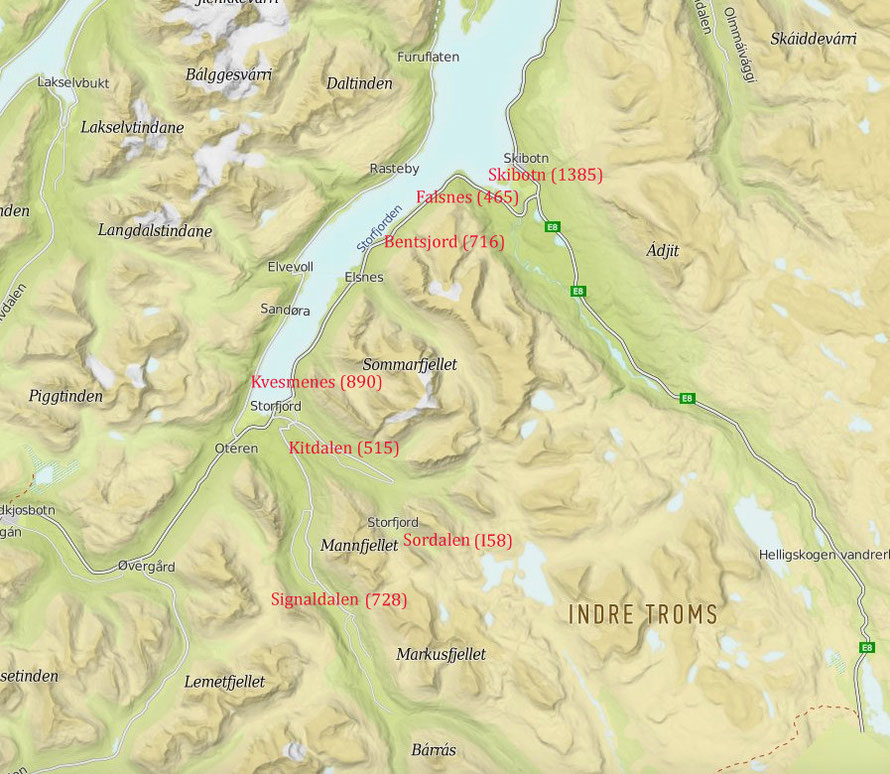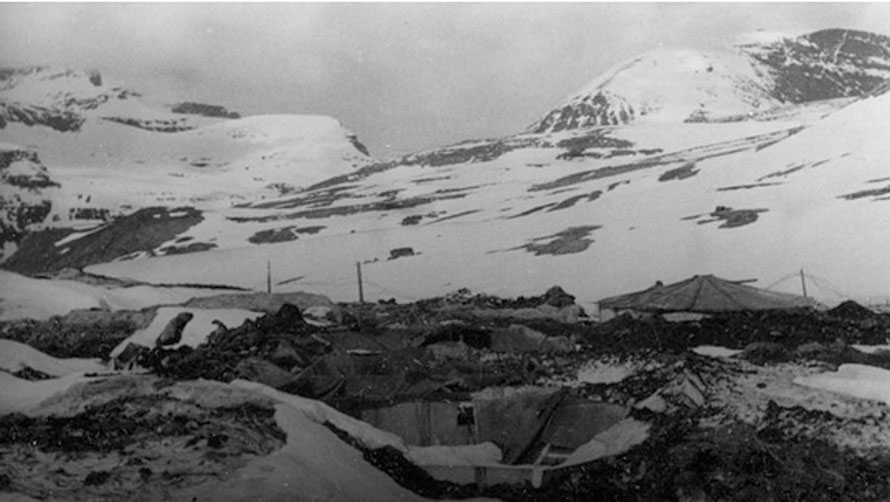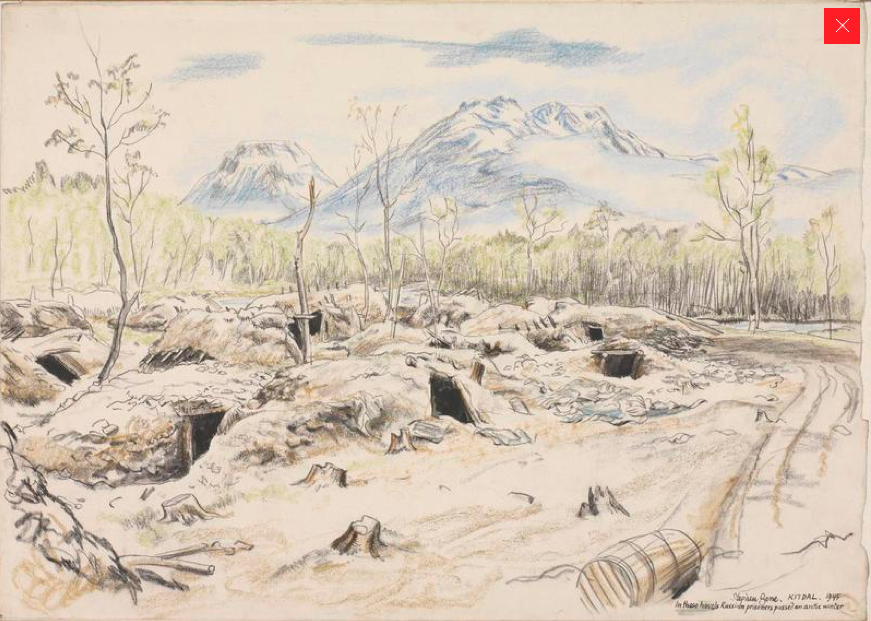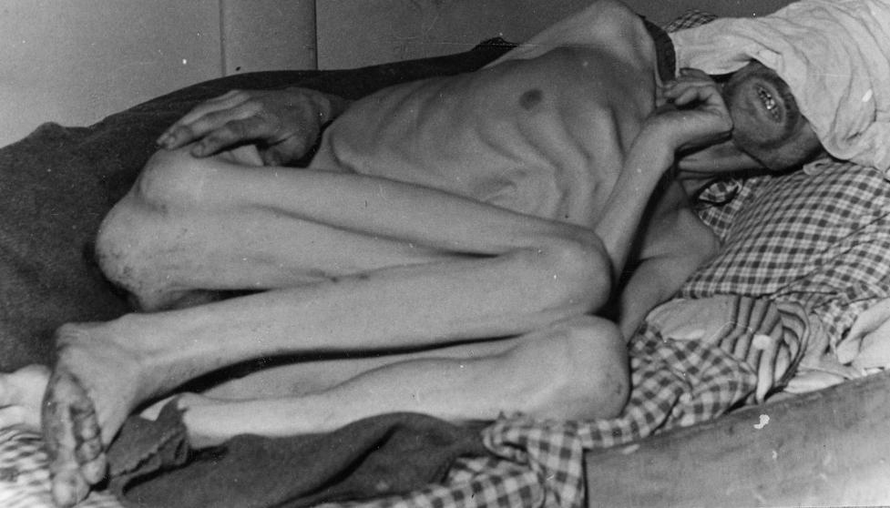The Prison Camps of the Lyngen Line and Mallnitz Death Camp
I am currently carrying out further research on the Lyngen Line camps and will update this page soon.

The Lyngen work camps were either built in the valleys and fjordsides are higher up in the mountains. The highest was in the Norddalen - Kitzbühel - at more than 800m. The camps were rudimentary in the extreme and as elsewhere the prisoners had to make their own 'accommodation' before being set to work or perhaps after their 'day shifts'.
It should be noted that the winters in Storfjord are markedly colder than on the coast, where the Gulf Stream modifies extreme winter temperatures - with average temperatures in January of -6.5 degrees C (Wikipedia: Storfjord). Annual rainfall is very low due to the rain shadow effect of the Lyngen Alps to the west.

POW Camps linked to the Lyngen Line in 1944-5 - places and prisoner numbers
Kvesmenes 4 camps, 890
Kitdalen 2 camps, 515
Sørdalen 178
Skibotn 4 camps, 1385
Falsnes 465
Bentsjord 716
Signaldalen 728
Lulljord 177
Øvergård 45
Total 5099
from Nordlys (14.04.2012)


Mallnitz Death Camp
Mallnitz was named after a ski resort in Austria (Nordlys 14.04.2012). Most of the 'German' troops on the Lyngen Line were from Austria. The prisoners used as slave labour were Russian.
Mallnitz camp was established as an ordinary labor camp in November/December 1944 but from 16 April 1945 it gained a new function. It was a death camp who took the prisoners who were too ill to work on the Lyngen Line. Nordlys (14.04.2012).

Vincent Hunt wrote,
The Russian prisoners were sent there to [Mallnitz to] die and [were] fed virtually nothing. In one mass grave, pointed out to Allied investigators by the prisoners themselves after the German surrender, there were 104 bodies stacked on top of each other in rows. Three other graves nearby contained 39 bodies, some showing signs of execution-style killings and bad treatment. The majority had died from typhus, pneumonia or TB. There were a total of 143 men in these graves.
Asbjørn Jaklin wrote in Nordlys
(14.04.2012),
Allied War Crimes Commission revealed [in the ] spring and summer of
1945 three cases of cannibalism among the starving prisoners. A Russian roasted and
ate the brain of a fellow prisoner who was executed with a shot in the head. Three other prisoners attacked the thigh
of a dead inmate. (Google translate from Norwegian).

Photo above: contemporary notes suggest Captain P. H. Gallagher of the joint Civil Affairs team visited Kitdalen on June 2nd with Captain McGill and 'German officers' (see Report of Capt P.H. Gallagher Exhibit II p8 of file WO331/24). The German officers present were Col [Josef] Remold, Medical Colonel Laeur '(old man) and Med Lt Col Brunner (with monocle). Possible also Lt Reissenger, who acted as an interpreter.
On June 9th there was a 'conference' with the following present: Lt Col Jenney (US) Mahor Dycker (No)Capt Gallagher (US) Lt Haukoy (NO interpreter), Mr Welja (Russ rep.) Mr Lunn (politimester) Col Remold (6th Mtn Div). Major Speisebecher CofS Armee Abteilung, Major Daumuller Company of Engineers. Major Stromski (Dep Judge Advocate - German) Lt Col Brunner and Lt Reissenger.
There are 11 Norwegian soldiers.
In this photo I suspect from left to right it is: stenographer, Mr. Lunn, Major Dycker, Col Remold, Capt Gallagher, Capt McGill, Lt Col Brunner, Mr Welja or Stromski, the interpreter Lt Reissenger and Col Laeur. But this is only a guess at the moment.
Anders Hesjedal
Conditions in the camp were appalling, the German guards did not enter the barracks without wearing gas masks.
You can still see the foundations or foundations after 15 prisoner barracks that was in the camp, besides the remains of the foundation of the cable car that transported building materials to
defenses that were built in the mountains. On the north side of the river is Spittalleiren. There are also foundations for houses, barracks and other installations. Farther up the mountain located Gastein clay with traces of 25 prisoner barracks and even
further up Kitzbühl. Camps in the area were, ironically, named after ski resorts in the
Alps. Troms Council
There is more here on this blog: Scorched Earth Stories.

In the Nordlys (14.04.2012) article there is an interview with Michael Stokkes of the Narvik Centre/Narviksenteretthat has researched PoWs in Norway. When asked why conditions in the Storfjord PoW camps was so bad Stokkes argues that it was a combination of factors: the improvised conditions after the Nordlicht withdrawal with exhausted troops, the need to reapidly put up a new defensive line, the onset of winter, the miserable 'accommodation', too little food and the absence of doctors and an infirmary.
The condition of prisoners after the march from northern Norway would also need to be taken into account as would the increasing demoralisation of the German troops - most of whom were Austrian.

He estimates that in all between the autumn of 1944 and the surrender of German forces in Norway in May 1945 800 prisoners - of about 7-8,000 - were worked, staved or neglected to death. Immediately after the peace another 150 prisoners died. And this of course does not take account of the prisoners who died or were shot on the hellish march from Kirkenes or from further south in Finland.
At the end of the war 550 sick PoWs from Kitdalen were admitted to the German field hospital at Øvergård after the war where 97 died and an additional 200 died at the improvised field hospital
which the Germans had created in Skjold, Øverbygd. It is likely that many of these prisoners came from
Storfjord.
Stokkes also believes that Mallnitz was a death camp where
prisoners who could not work were sent to die.

It is unclear
if the treatment of Russian and other PoWs on the Lyngen Line was worse than elsewhere. Given the extermination of 3.3 million Russian PoWs it is hard to know what might constitute
'worse'.
Conditions in the rest of Norway could be worse or better but the general bar was set at a frighteningly low level and co-ordinated through a command structure that went back to Hitler in Berlin. See, for example, the Knight Foundation for a Polish testimony about the notorious Beisfjord camp near Narvik (this was Stalag 330 above) where 83% of 900 Yugoslav prisoners were killed within four months,
Svein Tore Aspelund, who heads the Narvik Museum’s human rights section, said that of 900 POWs who arrived on June 24, 1942, in Beisfjord, 88 were under 18; one was 8 years old and 117 were between 18 and 20. Eighty-three percent of them “were killed, or died of illness or hard work in just four months,” he said.

Norwegian photographer, Bjorn Winsnes was among the first who entered the camps in Troms after the war. Talking to Norwegian daily Dagbladet, he said the survivors looked like skeletons.
When I took pictures of them, I turned off the flash because we were afraid that such a bright light could kill them. They were so fragile

To next page: Aftermath: The War Crimes Trials
